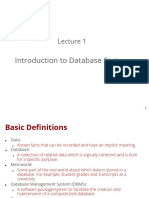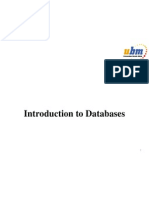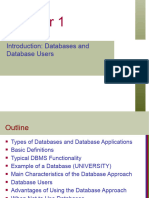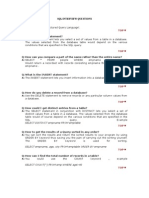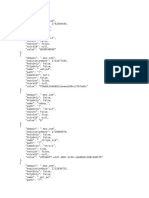0% found this document useful (0 votes)
36 views7 pagesDbms Unit 1
Databases are structured collections of data that enable efficient storage, retrieval, and management of information, essential for various applications. Database Management Systems (DBMS) provide functionalities like data definition, manipulation, and transaction management while ensuring data integrity and security. The transition from file systems to database systems has significantly improved data handling capabilities, making them vital for businesses and organizations.
Uploaded by
vaibhav.k.keshariCopyright
© © All Rights Reserved
We take content rights seriously. If you suspect this is your content, claim it here.
Available Formats
Download as PDF, TXT or read online on Scribd
0% found this document useful (0 votes)
36 views7 pagesDbms Unit 1
Databases are structured collections of data that enable efficient storage, retrieval, and management of information, essential for various applications. Database Management Systems (DBMS) provide functionalities like data definition, manipulation, and transaction management while ensuring data integrity and security. The transition from file systems to database systems has significantly improved data handling capabilities, making them vital for businesses and organizations.
Uploaded by
vaibhav.k.keshariCopyright
© © All Rights Reserved
We take content rights seriously. If you suspect this is your content, claim it here.
Available Formats
Download as PDF, TXT or read online on Scribd
/ 7





